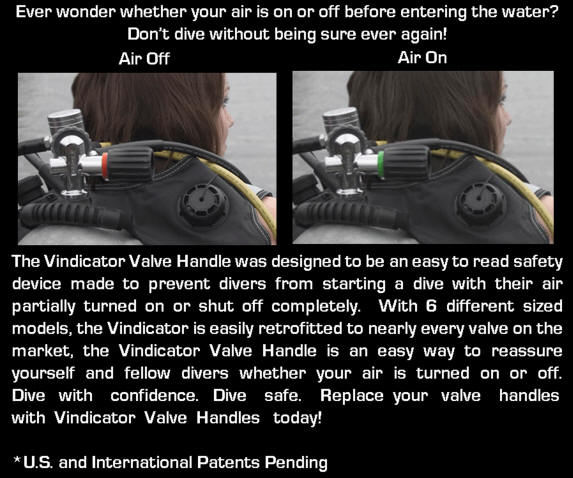While it may be common practice for many divers, I think this is a REALLY bad idea.
I do understand that. That is why when some of us do it, we take precautions to negate the risk of jumping in without our air on, as discussed previously. It is in our routine to purge the lines after we turn the valve off so the pressure is zeroed. I make a pre-dive check of my gear and when I go back to my rig, the first thing I do is turn my air on. Once I am ready to splash, I take a couple of breaths and watch the pressure for fluctuation. The pressure is steady, I fill my BC and splash. I never make negative drops. I have a routine that I am used to and try to not get distracted from it or rushed.
There are some charters that I have been on where we are asked to set up our gear on the dock or before the boat leaves because it is a small boat/it is too rough to be putting gear together once at the mooring/they expect us to be ready to jump once moored. I understand that in that case, you would just leave the air on.
Leaving the air on is not foolproof either because someone could assume the air is on and jump in, and it may not be on. Someone could turn it off for you if you're not nearby. On a Catalina liveaboard a few years ago, a DM turned off all our tanks unbeknownst to us up on the sun deck, but he did not bleed the lines. Had I not checked it, I wouldn't have known until it mattered. Some people thought their tanks were still on. He did remember, though and turned them on before they jumped in.
In the period that I was turning my valve fully on, I had a DM turn it off while my rig was on me. I knew because there were too many turns to just be checking it. There was too much confusion, so I stopped allowing anyone to touch my gear, made sure I could reach my valve and started doing the pressure test.
For someone to jump in and sink with their air off requires several failures, not only the air being off. They would have to have skipped their pre-dive and buddy check, had their air off, be making a negative drop, did not establish buoyancy or buddy contact on the surface, possibly be overweighted, could not reach their valve and did not release their weights when buoyancy could not be established.
I make the assumption that my air is off until I turn it on and check that it is on right before I splash. I think that is safer than making the assumption that the air is on.
Not to put you on the spot, but how often have you seen this happen?
I have actually seen/heard an o-ring blow several times on boat rides/waiting for shore dives. It took a few times of hearing "someone left their tank on" to ask about it and notice that many divers set up their gear and then turned it off. It is not a practice for everybody or every situation, and certainly not for someone who skips pre-dive checks or any procedure that goes with it.





